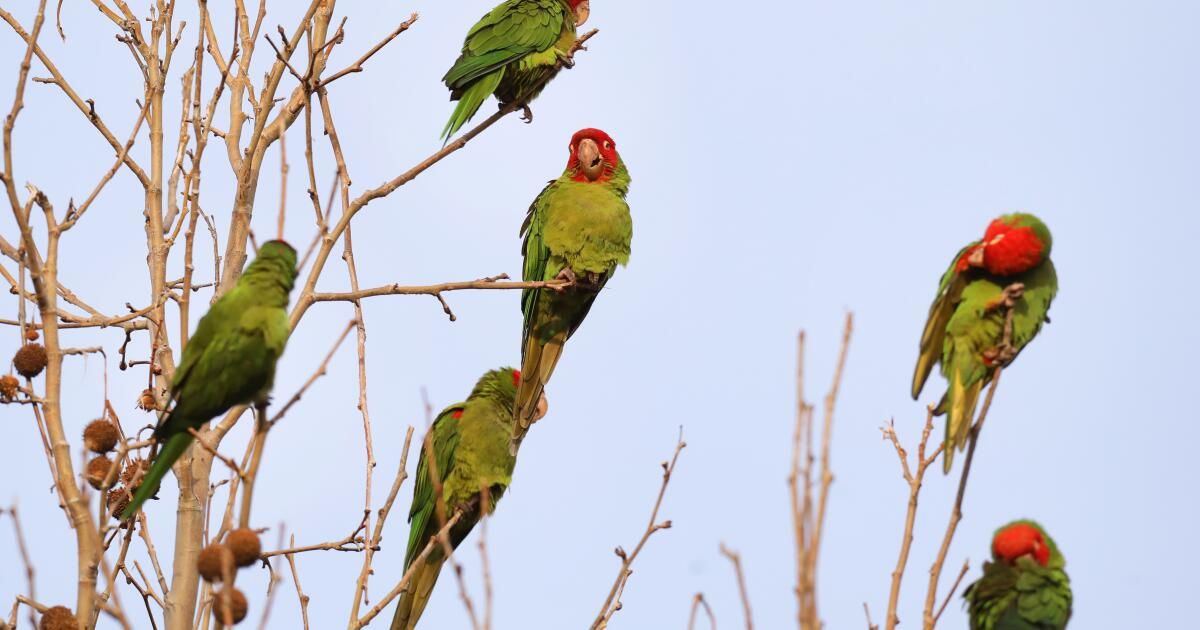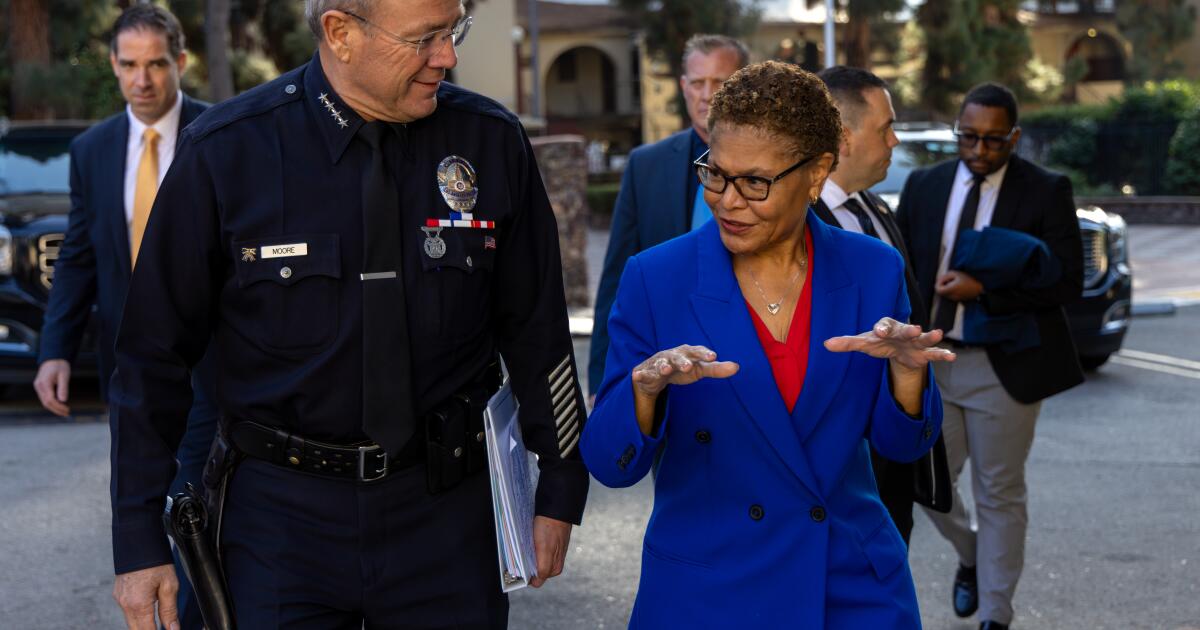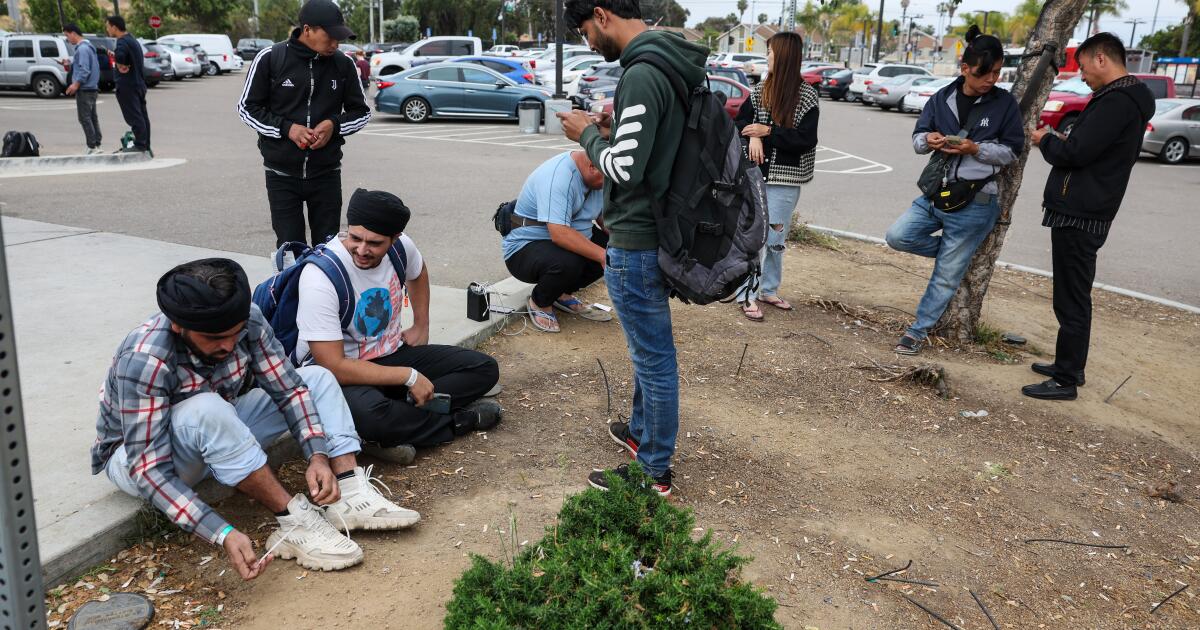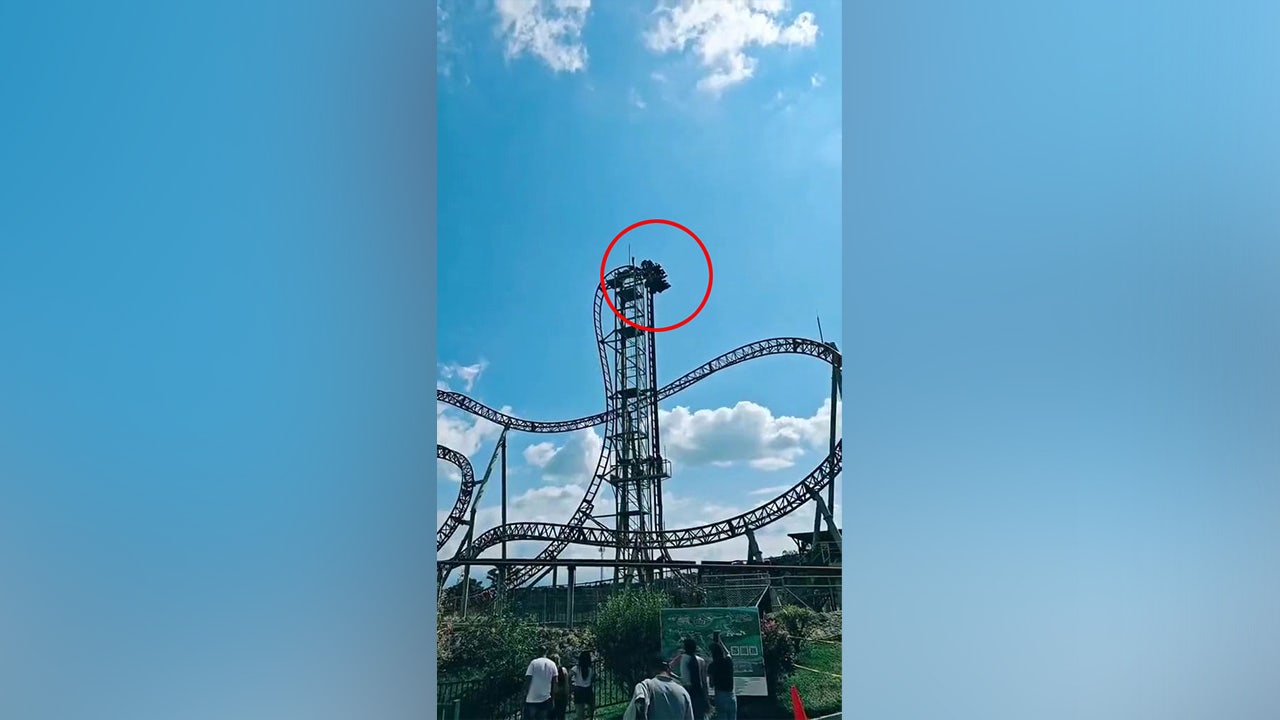One morning, during a walk through the Huntington Botanical Garden with her mother, Brenda Ramirez was alarmed by the sudden squawking, chirping and screeching of troops of parrots flying overhead at high speed in tight, precise formations.
“I asked my mom what they were,” Ramírez recalled of that day 14 years ago. “She said, 'Darling“They are like the parrots from Mexico that we have seen in zoos, except for one thing: they fly freely and breed in the trees along the streets of our city.”
Aggressive and impactful reporting on climate change, the environment, health and science.
Ramírez was fascinated by this fleeting glimpse of the adaptation of tropical species in one of the largest asphalt jungles in the world.
Now, at 27, he leads a team of researchers at the Free Flying Los Angeles Parrot Project, based at Occidental College's Moore Laboratory of Zoology, whose goal is to solve a biological enigma: How did red-crowned parrots establish of lilac crown local urban reproduction? populations through the pet trade from Mexico, where both species are on the brink of extinction?
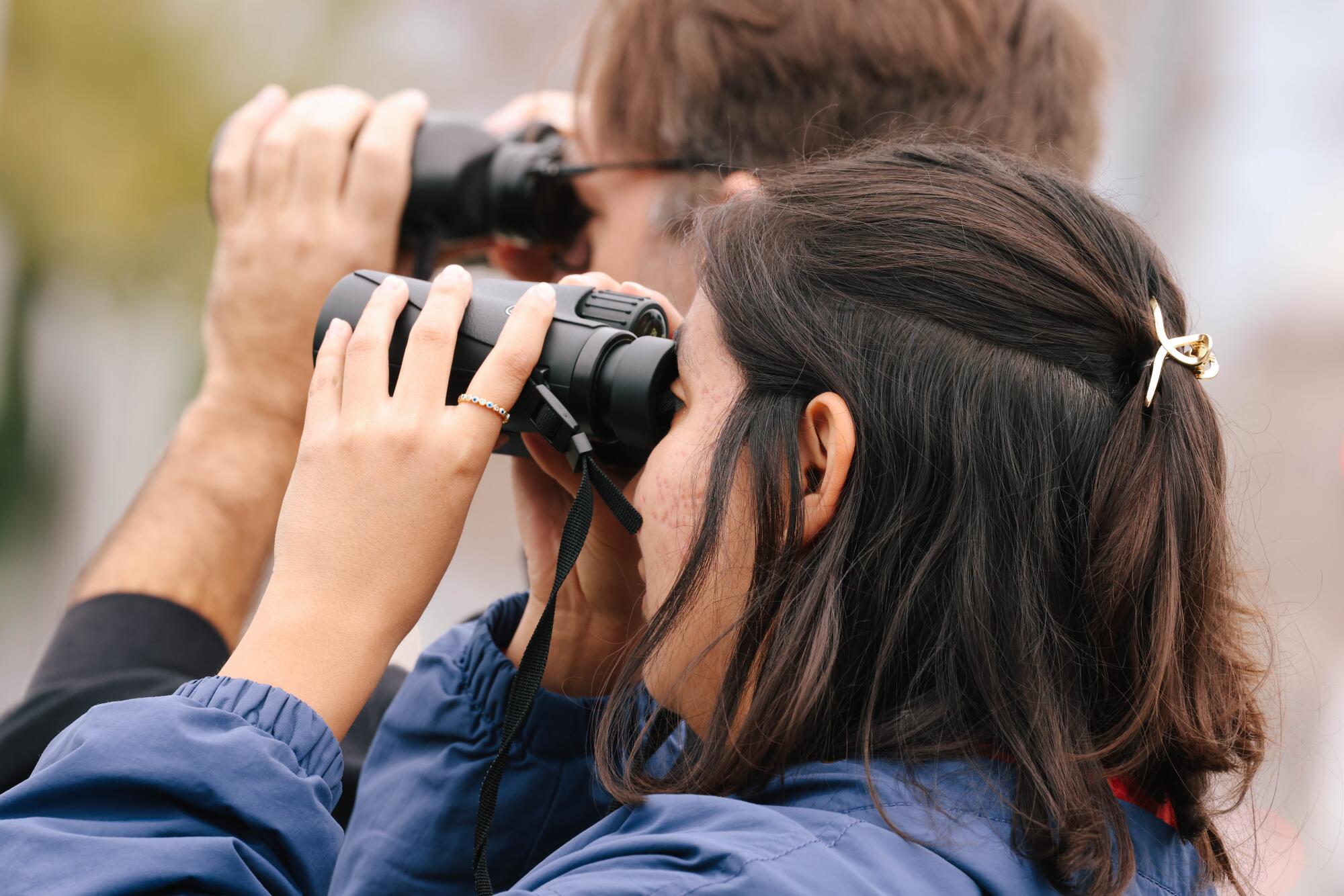
Brenda Ramirez, right, and John McCormack search for parrots along the road in Temple City.
(Dania Maxwell / Los Angeles Times)
One possible answer is that Southern California cities have only in the last 100 years provided these sister species with a resource untapped by native birds: the fruits and flowers of exotic trees used for landscaping, according to the team's new report in Diversity and Distributions magazine. .
Their findings add to a growing body of evidence that some introduced species, including these wild parrots, may undergo rapid niche shifts beyond what seems possible in the forested regions of northern Mexico in which they evolved.
For example, the driest month in Southern California is significantly drier than any part of its native habitats in the western and eastern coastal regions of Mexico, the study says. The timing of precipitation here is also different, with a winter rain regime rather than summer rains.
“Artificial irrigation may bridge the gap between native and introduced climates,” the study suggests, “allowing more year-round vegetation in Southern California cities than expected given their natural precipitation levels.”
That “urban oasis effect” created by sprinkler irrigation systems “could partly explain why introduced parrots don't seem to spread beyond urban centers,” he says. “Their intelligence and behavioral plasticity could allow them to adapt even more to urban life.”
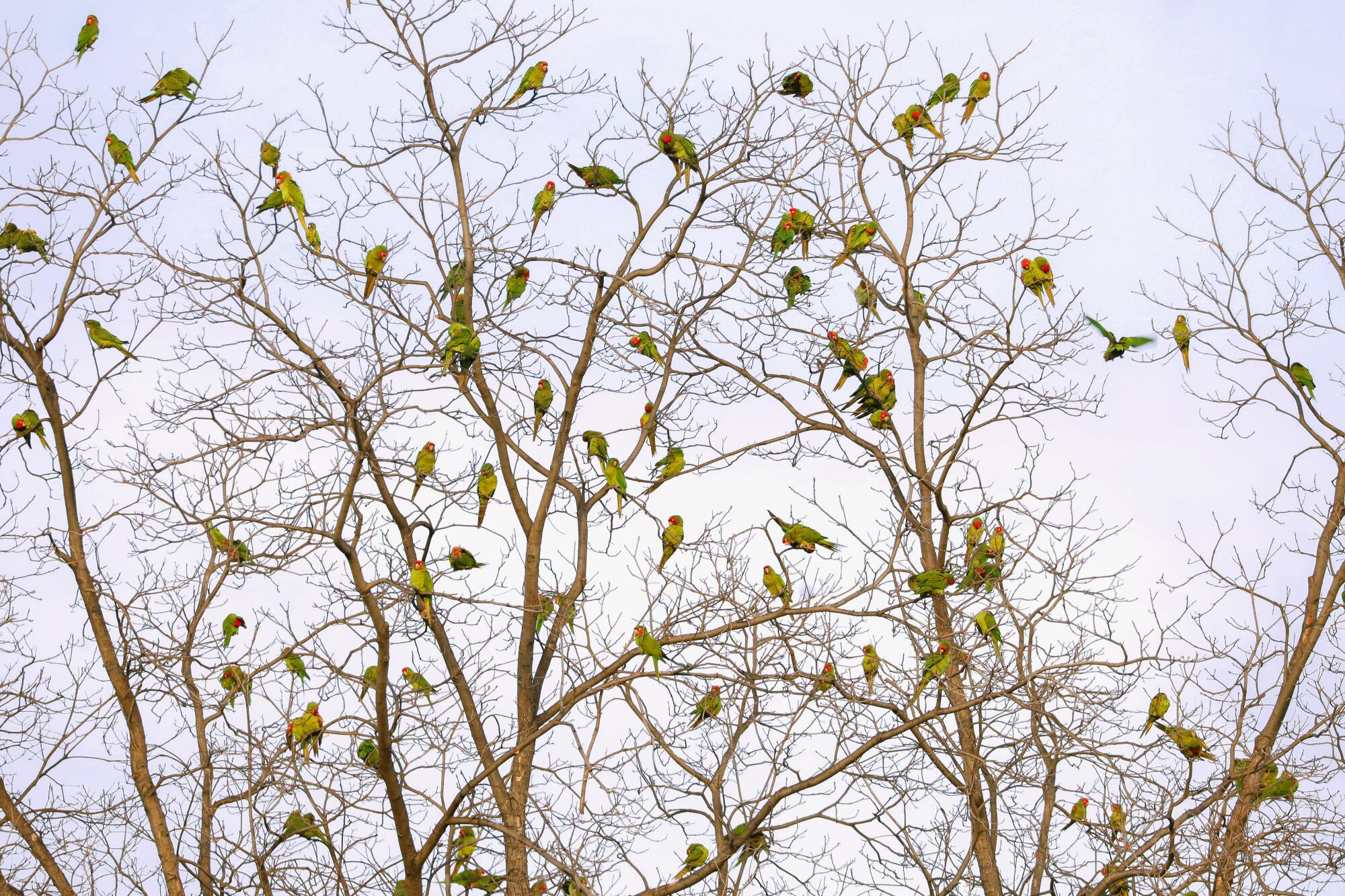
Seasonal parrots gather at a shelter in Temple City in January 2023.
(Carolyn Cole / Los Angeles Times)
The look of Southern California's green canopies has changed significantly since the 1950s and '60s, when developers spurned native oaks and sycamores. Instead, they chose to landscape their subdivisions, apartment complexes, business parks, shopping centers and roads with non-native trees, such as sweetgum, camphor, carrot, fig and ficus, all of which are preferred by parrots.
For reasons not fully understood, several hundred parrots seek lodging each night on the branches of London fig and plane trees that line a bustling stretch of Rosemead Boulevard in Temple City. This strange place is believed to be one of the most populated parrot roosting sites in the Los Angeles area.
“It's just cultural memory: They spend all day feeding on the seeds, berries and flowers of the surrounding tropical treescape,” said John McCormack, director and curator of the Moore Laboratory of Zoology, during a recent visit to the boulevard. “At dusk, they gather here to rest and sleep.”
Parrots are fond of spending the night here, and residents are on constant alert for poachers. A video of nets in trees and an unidentified man hitting captured parrots against a concrete wall between Rosemead Boulevard and East Las Tunas Drive on October 26 generated angry calls and letters to the local Los Angeles County Sheriff's station, al City Council and other government agencies. .
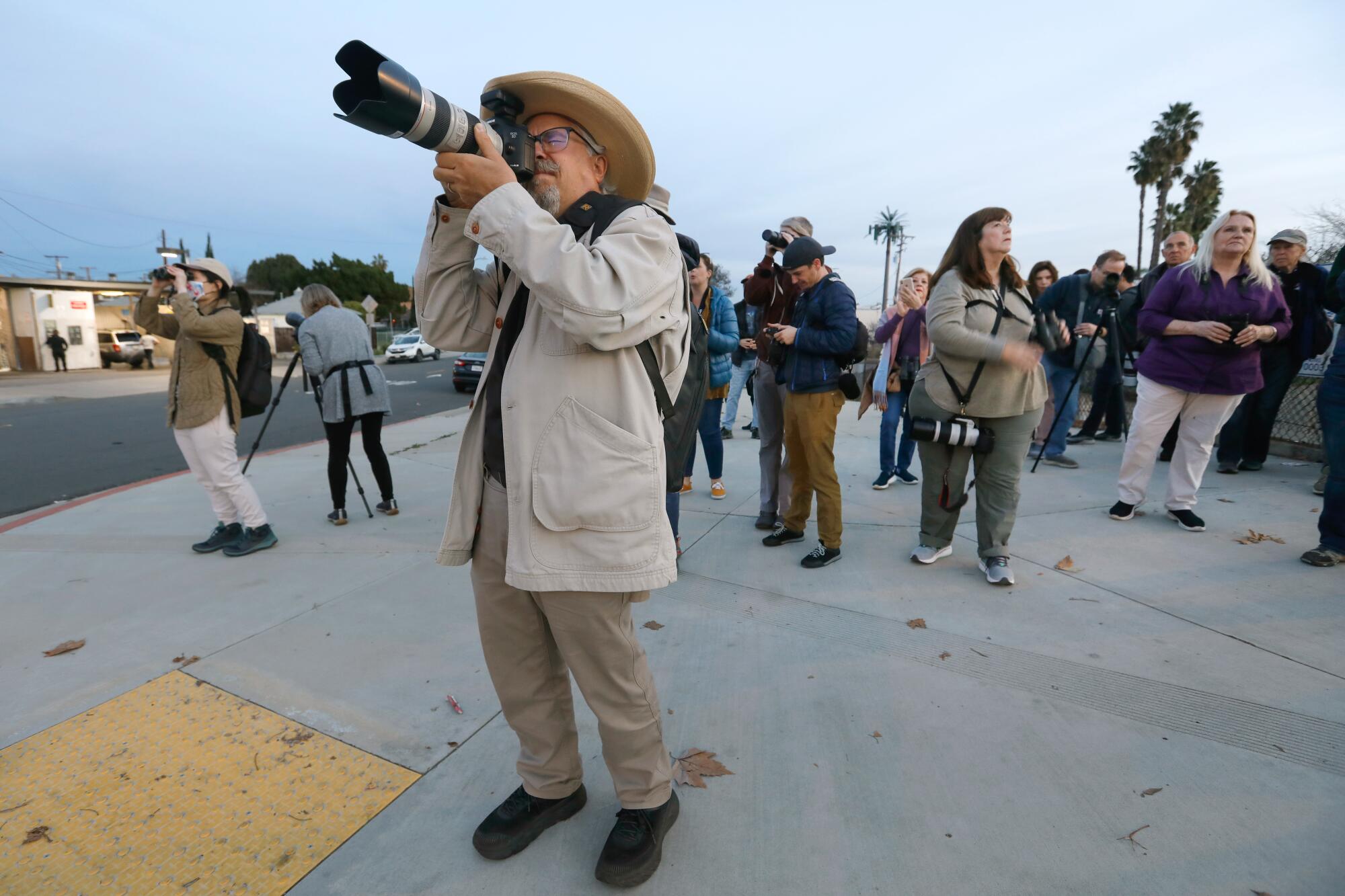
Bird watchers photograph parrots in Temple City during an Audubon Society meeting in January 2023.
(Carolyn Cole / Los Angeles Times)
It is unclear whether the man seen in the video was killing some of the parrots he caught and taking others with him to sell on the illegal wildlife market.
Those birds and other introduced species of parrots and parakeets that have found niches in the noise and commotion of Southern California urban life are believed to be descendants of released pets, especially during the 1970s and 1980s, when illegal importation of such wild birds reached its peak. peak, according to the study.
Red-crowned parrots, whose habitat is limited to the lowlands of northeastern Mexico, were first recorded in the Los Angeles area in 1963. Since then, the population has increased to more than 3,000 birds, according to the study.
The number of lilac-crowned parrots, which are endemic to the tropical lowlands of western Mexico and became established locally in the 1980s, is about 800 birds.
Since both species are considered endangered in their ranges in Mexico due to habitat loss and trapping for the pet trade, established local flocks have become prized for their conservation potential.
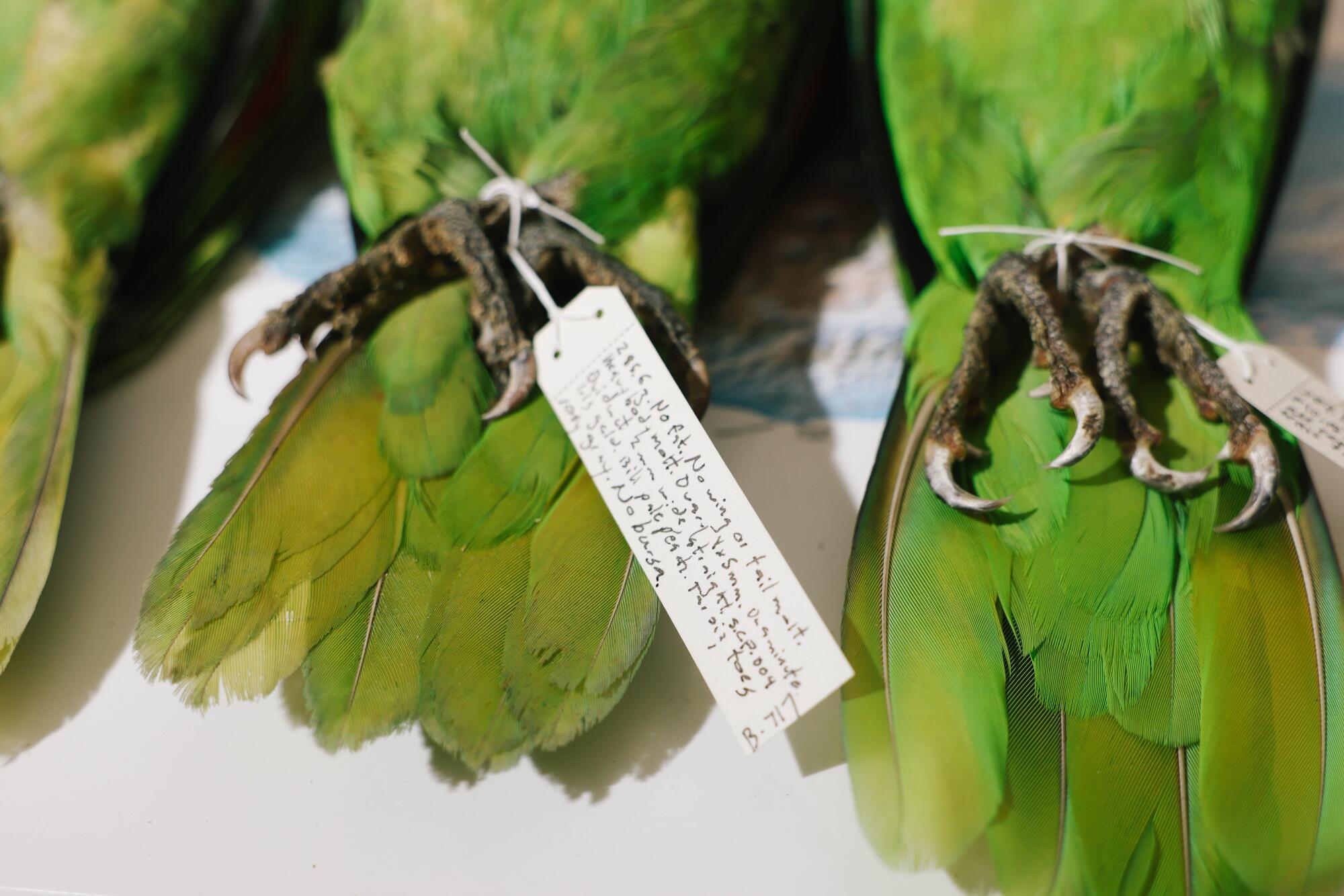
Parrot specimens are seen inside the Moore Laboratory of Zoology at Occidental College in Los Angeles. Two species of parrots have established breeding populations in Southern California following their introduction through the pet trade from their range in Mexico, according to a new scientific study.
(Dania Maxwell / Los Angeles Times)
The two species are so similar in size and color that even experts find it difficult to tell them apart. Both are stout, crow-sized birds that form lifelong pair bonds that typically produce one brood per breeding season.
However, both species have been seen together in the same flocks, underscoring the importance of monitoring the birds for signs of hybridization that could undermine proposals to reintroduce urban parrots from Southern California to their native habitats in Mexico.
Meanwhile, the Moore Lab Project aims to become a center for urban parrot ecology.
For his mother's birthday, Nov. 12, Ramirez took her to Rosemead Boulevard to witness the unusual evening spectacle of squawking parrots darting into the trees.
“As the sun was setting, we could hear them flying from all directions,” he recalled. “I turned to my mom and said, 'This is the best thing ever.'”

